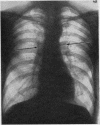Abstract
Measurements were made of the distance between the bifurcation of the right and left main pulmonary arteries (the transpulmonary artery distance) on plain chest radiographs in healthy subjects, patients with chronic bronchitis, and patients with polycythaemia rubra vera. The following figures for transpulmonary artery distance were obtained—healthy subjects: range 7·0-10·5 cm., mean 8·76 cm., S.D. 0·81 cm.; patients with chronic bronchitis: range 7·3-12·4 cm., mean 10·26 cm., S.D. 1·08 cm.; patients with polycythaemia rubra vera: range 8·3-10·7 cm., mean 9·20 cm., S.D. 0·57 cm. The transpulmonary artery distance was related to height but not to age or sex in the healthy subjects. It did not appear to be influenced by variations in the central blood volume. There was a linear relation between transpulmonary artery distance and mean pulmonary arterial pressure in patients with chronic bronchitis. In 21 of 29 patients whose transpulmonary artery distance was greater than 9·5 cm., the mean pulmonary arterial pressure exceeded 30 mm. Hg. In only one of the 13 patients whose transpulmonary artery distance was less than 9·5 cm. did the mean pulmonary arterial pressure exceed 30 mm. Hg. These results suggest that the measurement of transpulmonary artery distance may be useful in following the progression of pulmonary hypertension and detecting its presence in epidemiological and other studies.
Full text
PDF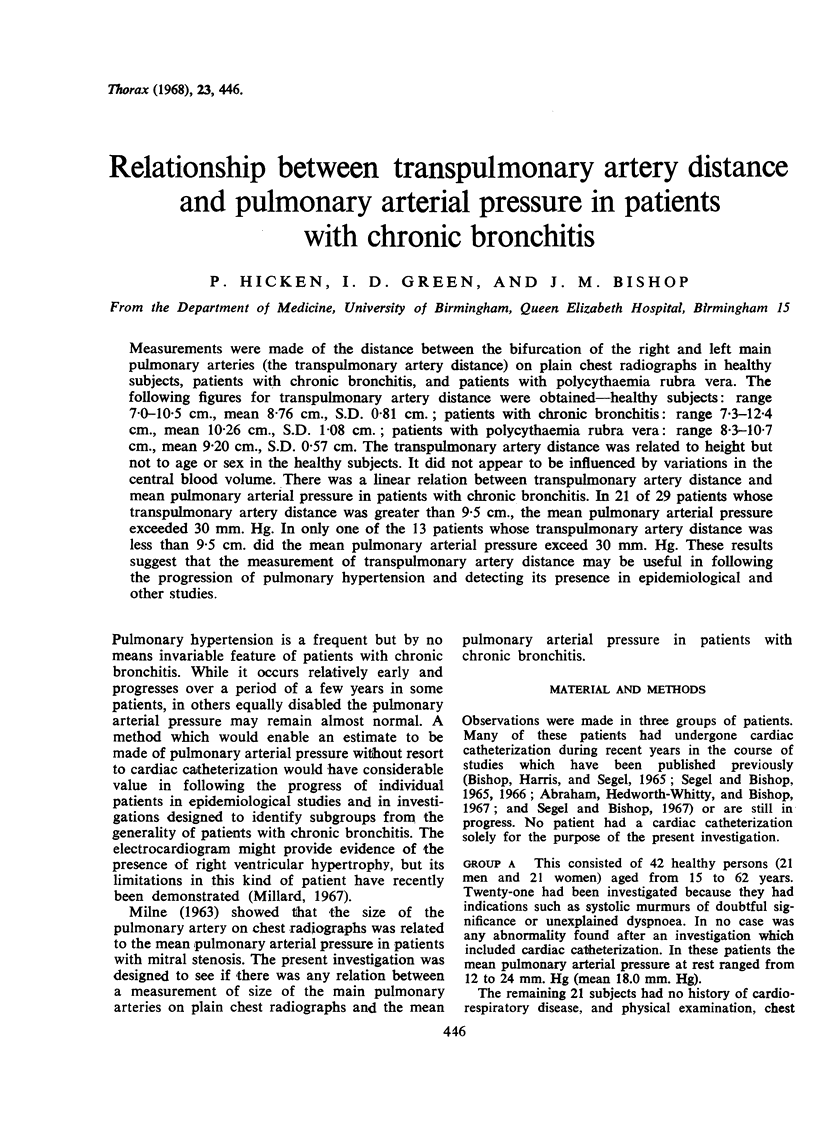
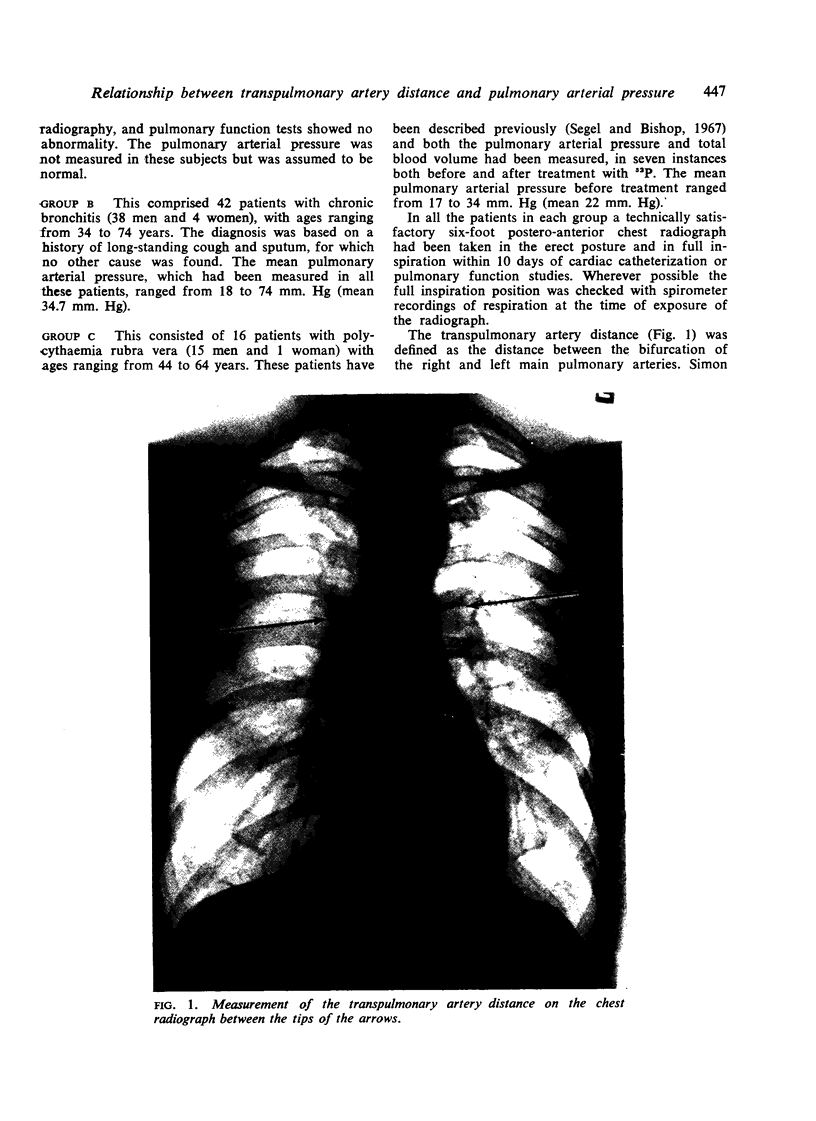
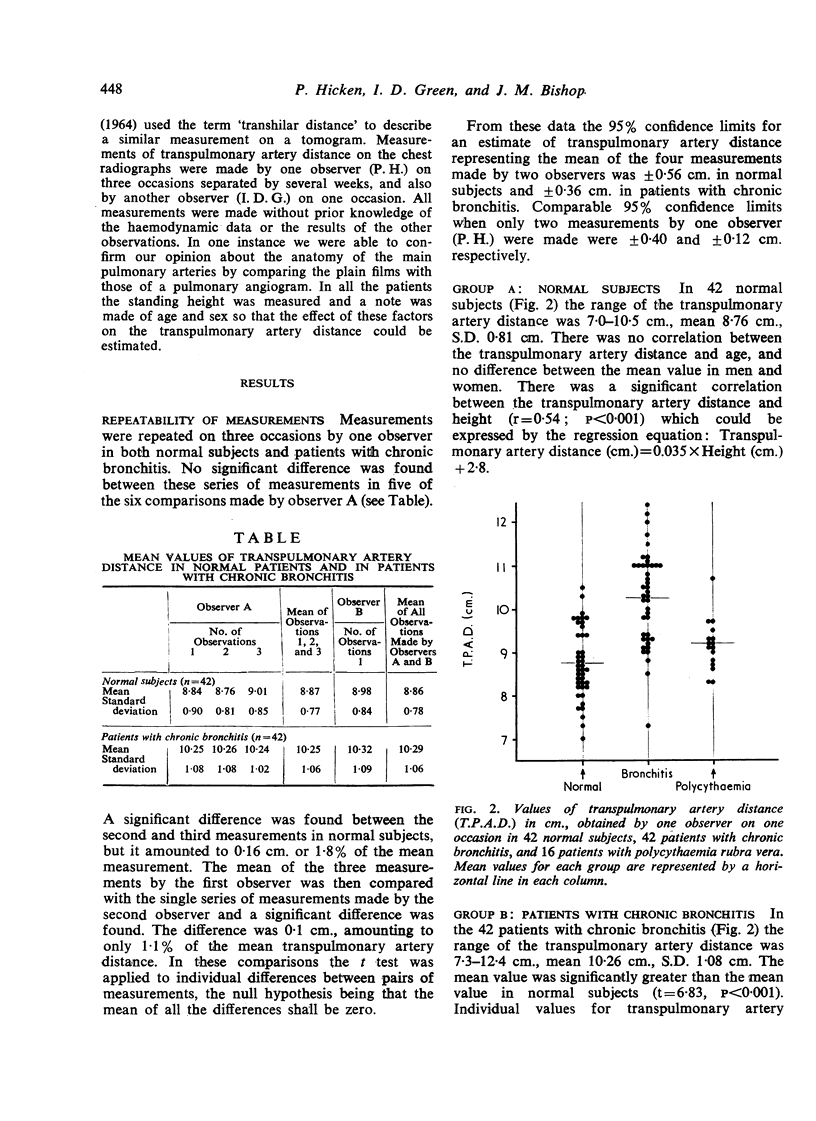
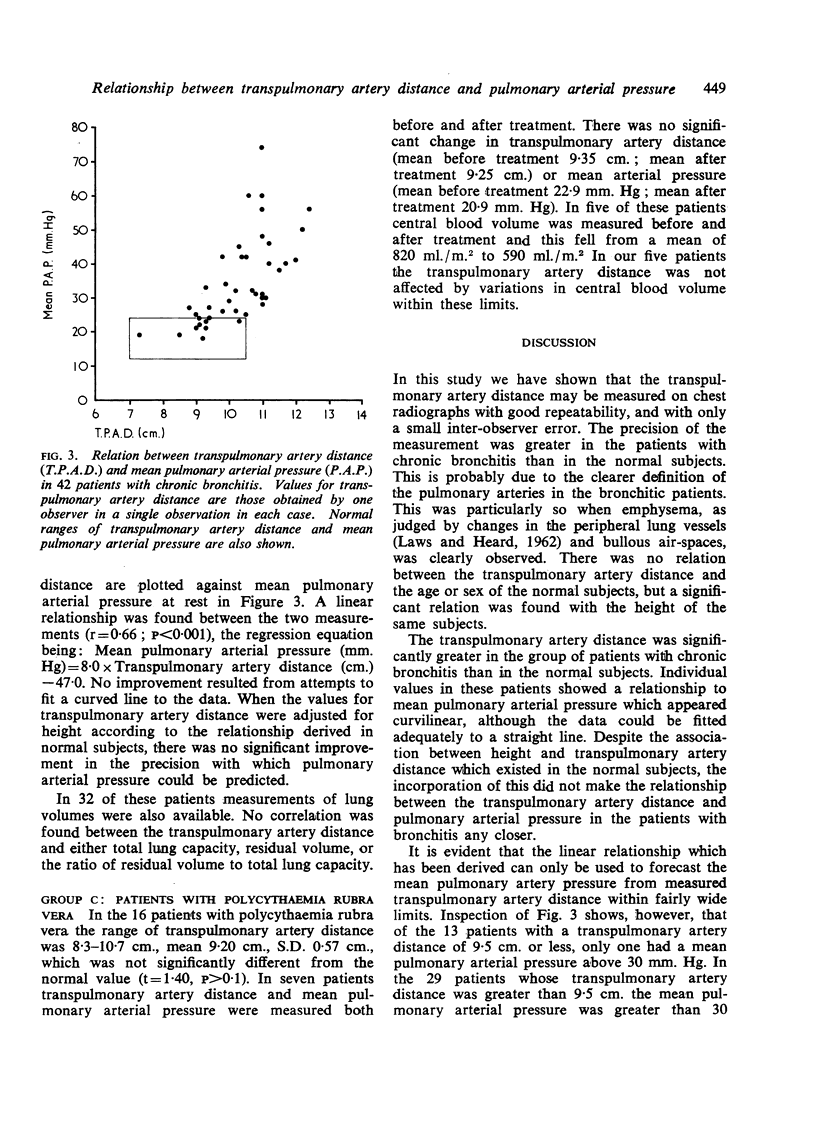
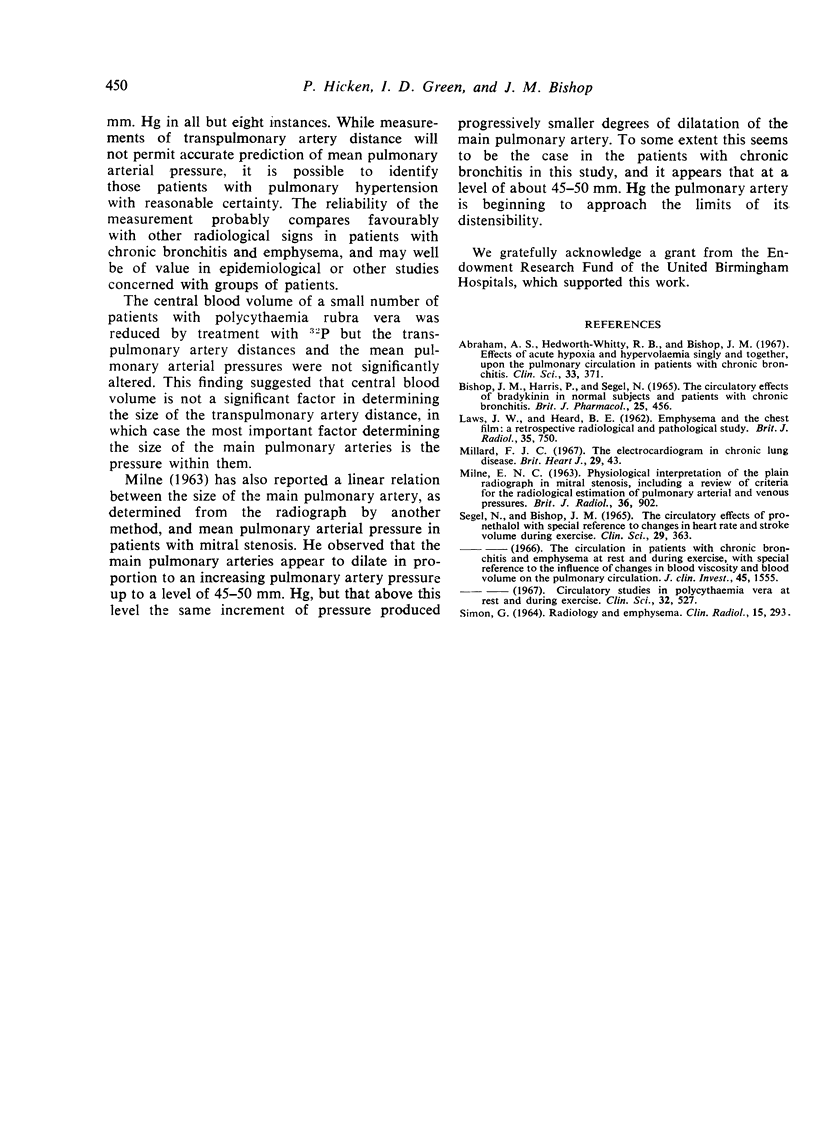
Images in this article
Selected References
These references are in PubMed. This may not be the complete list of references from this article.
- Abraham A. S., Hedworth-Whitty R. B., Bishop J. M. Effects of acute hypoxia and hypervolaemia singly and together, upon the pulmonary circulation in patients with chronic bronchitis. Clin Sci. 1967 Oct;33(2):371–380. [PubMed] [Google Scholar]
- Bishop J. M., Harris P., Segel N. The circulatory effects of bradykinin in normal subjects and patients with chronic bronchitis. Br J Pharmacol Chemother. 1965 Oct;25(2):456–469. doi: 10.1111/j.1476-5381.1965.tb02064.x. [DOI] [PMC free article] [PubMed] [Google Scholar]
- MILNE E. N. PHYSIOLOGICAL INTERPRETATION OF THE PLAIN RADIOGRAPH IN MITRAL STENOSIS, INCLUDING A REVIEW OF CRITERIA FOR THE RADIOLOGICAL ESTIMATION OF PULMONARY ARTERIAL AND VENOUS PRESSURES. Br J Radiol. 1963 Dec;36:902–913. doi: 10.1259/0007-1285-36-432-902. [DOI] [PubMed] [Google Scholar]
- Millard F. J. The electrocardiogram in chronic lung disease. Br Heart J. 1967 Jan;29(1):43–50. doi: 10.1136/hrt.29.1.43. [DOI] [PMC free article] [PubMed] [Google Scholar]
- SIMON G. RADIOLOGY AND EMPHYSEMA. Clin Radiol. 1964 Oct;15:293–306. doi: 10.1016/s0009-9260(64)80001-5. [DOI] [PubMed] [Google Scholar]
- Segel N., Bishop J. M. The circulatory effects of pronethalol with special reference to changes in heart rate and stroke volume during exercise. Clin Sci. 1965 Oct;29(2):363–373. [PubMed] [Google Scholar]



